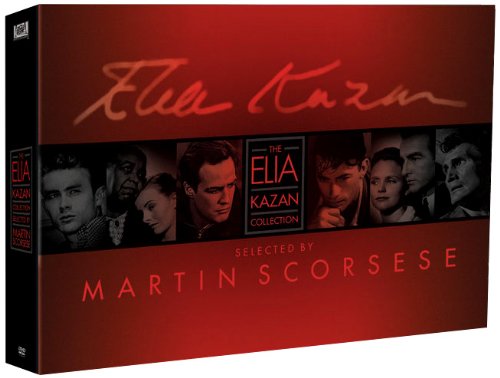A couple years ago, I would regularly check in with some interesting “DVDs of Note” that I thought seemed interesting. I’m going to bring that back on a monthly basis and have a look at some of the releases of the month that I want or at least want to have a look at (now expanded to include the ever growing world of Blu-ray).
While much of the focus this week has been on the 45th anniversary Blu-ray premiere of The Sound of Music (which I’ll be looking at early next week), 20th Century Fox also gave Chitty Chitty Bang Bang the Blu-ray treatment this week, with a bonus standard DVD and new features. Paramount also released the Blu-ray edition of White Christmas, which seems to receive a brand new release every year.
On November 9, 20th Century Fox will be releasing The Elia Kazan Collection, an 18-disc DVD box set featuring his most well known films, with cooperation from Warner Bros and Columbia. The films included in the collection have been selected by Martin Scorsese and will feature his new documentary A Letter to Elia which was recently seen in various film festivals and on PBS “American Masters” series. Five of the films are making their first appearance on DVD: A Tree Grows in Brooklyn, Man on a Tightrope, Viva Zapata!, Wild River and America, America. There are no plans at present to release these films individually. The set retails for $199.98. Having just seen America, America for the first time earlier this year, I am quite pleased that it’s finally receiving a DVD debut.
That same day, Warner Bros. will be reissuing the 1958 comedy classic Auntie Mame in a brand new keep case package. The film, whose original 2002 release went out of print about a year ago, is a perennial favorite and is based on the hilarious stage play by Lawrence and Lee. Star Rosalind Russell and featured actress Tony winner Peggy Cass reprise their stage roles for the screen. The film was a huge hit, garnering six Oscar nominations including Best Picture, Actress (Russell), Supporting Actress (Cass). The new packaging isn’t as exciting, but it’s worth it just to keep the film in print. No word on any Blu-ray edition. Yet.
November 16, Image Entertainment releases Sondheim: The Birthday Concert on DVD and Blu-Ray. The NY Philharmonic concert, which took place on March 15 & 16, will feature a combination of performances from both evenings. Hosted by David Hyde Pierce, the concerts presented the best of Broadway. The first act consists of the songs for which he wrote only lyrics, as well as a parade of original performers recreating their signature numbers. The second act contains the now-legendary red dress segment, in which Sondheim divas, decked out in spectacular red gowns and outfits deliver showstopping renditions of some of his biggest numbers.
November 30: Disney Home Entertainment is going to release the documentary The Boys: The Sherman Brothers’ Story, which chronicles the professional and personal lives of Richard Sherman and Robert Sherman, arguably the most prolific songwriters in Disney history. The very personal story of their estrangement belies the music that has brought joy to millions. Their sons made this film in an effort to both try to understand the personal relationship while celebrating the professional collaboration. Also that day, Disney will be bringing Fantasia and Fantasia 2000 out of its vault for with a DVD reissue and Blu-ray premiere.





